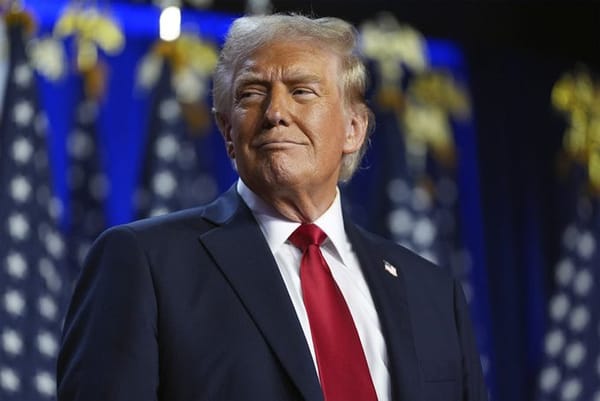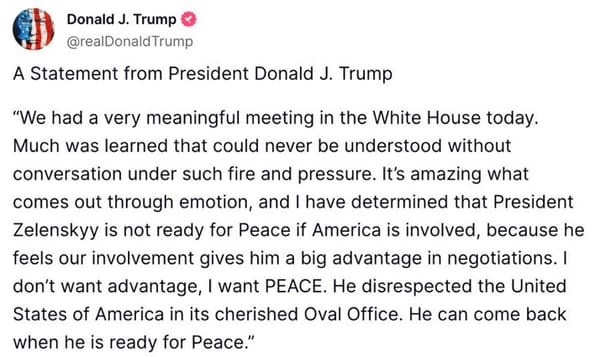On May 29, 2025, the U.S. Court of Appeals for the Federal Circuit made a pivotal decision to reinstate President Donald Trump’s tariffs, overturning a prior ruling by the U.S. Court of International Trade that had blocked them. This development, reported just an hour ago, marks a significant moment in Trump’s ongoing trade war, allowing the so-called “Liberation Day” tariffs to remain in effect while an appeal process unfolds. These tariffs, which target imports from key U.S. trading partners, are a cornerstone of Trump’s broader economic strategy to address trade deficits, protect American industries, and reindustrialize the U.S. economy. This article explores the legal battle, the economic impact of the tariffs, the broader context of Trump’s trade policy, and the potential ramifications for global trade dynamics.
The Legal Battle: From Block to Reinstatement
The reinstatement of Trump’s tariffs follows a contentious legal struggle that began when the U.S. Court of International Trade ruled on May 28, 2025, that the president had overstepped his authority by imposing across-the-board duties on imports from U.S. trading partners. The Manhattan-based court, which specializes in international trade and customs laws, found that Trump’s actions exceeded the scope of the statutory powers granted to the executive branch under Section 232 of the Trade Expansion Act of 1962 and other relevant laws. The ruling was a significant blow to Trump’s trade agenda, effectively halting most of the tariffs and prohibiting the administration from making future modifications to them.
However, the Trump administration moved swiftly to appeal the decision, filing a notice with the U.S. Court of Appeals for the Federal Circuit in Washington, D.C. On May 29, 2025, the appeals court granted the administration’s request to temporarily pause the lower court’s ruling, allowing the tariffs to remain in effect while the appeal process plays out. The court gave the administration 10 days to implement necessary changes to comply with its orders, signaling that this reinstatement is a procedural step rather than a final resolution. Jeffrey Schwab, a lawyer representing the business plaintiffs who challenged the tariffs, described the decision as “merely a procedural step as the court considers the government’s request for a longer stay pending appeal.” Schwab expressed confidence that the Federal Circuit would ultimately deny the government’s motion, citing the “irreparable harm” the tariffs inflict on U.S. businesses.
The administration has indicated that it may seek “emergency relief” from the U.S. Supreme Court as early as May 30, 2025, if the appeals court does not grant a longer stay. This legal back-and-forth underscores the contentious nature of Trump’s trade policies, which have polarized stakeholders across industries, from manufacturers and retailers to farmers and consumers.
Understanding the “Liberation Day” Tariffs
The tariffs in question, dubbed “Liberation Day” tariffs by President Trump, were announced on April 2, 2025—a date Trump proclaimed as a symbolic turning point in his mission to reclaim American economic sovereignty. These tariffs represent the most sweeping tariff hike since the Smoot-Hawley Tariff Act of 1930, a policy infamous for triggering a global trade war and exacerbating the Great Depression. The “Liberation Day” tariffs target a wide range of imports, including iron, steel, aluminum, and car imports from countries such as China, Mexico, and Canada, as well as broader goods from other trading partners.
Trump’s trade doctrine is rooted in the belief that the U.S. has been disadvantaged by global trade agreements, resulting in persistent trade deficits and the decline of American manufacturing. The tariffs aim to “retaliate, reclaim, and reindustrialize,” as articulated by the administration, by protecting domestic industries, encouraging companies to bring production back to the U.S., and generating revenue to offset the trade imbalance. However, the policy has been met with mixed reactions, with supporters arguing that it bolsters national security and economic independence, while critics warn of inflationary pressures, reduced global competitiveness, and retaliatory measures from trading partners.
Economic Impact: A Double-Edged Sword
The economic implications of Trump’s tariffs are profound and multifaceted, as detailed in several recent studies. A report from the Center for Strategic and International Studies (CSIS), published on April 9, 2025, used a global general equilibrium trade model to assess the impact of the “Liberation Day” tariffs alongside other Trump-era tariffs. The findings are stark: the tariffs are projected to reduce U.S. GDP by 1 percent, equivalent to a $300 billion annual output loss at 2024 GDP levels. Prices are expected to rise by 9.5 percent, while nominal wages increase by only 8.6 percent, resulting in a decline in real wages. In essence, the policy shrinks the broader economy, delivers inflation, and reduces household income, even as it aims to rebuild domestic industries.
A January 2024 International Monetary Fund (IMF) paper, cited in a Tax Foundation report from May 27, 2025, provides further context. The study found that unexpected tariff shocks tend to reduce imports more than exports, leading to slight decreases in the trade deficit but at the expense of persistent GDP losses. For example, reversing the 2018–2019 tariffs would increase U.S. output by 4 percent over three years, suggesting that the current tariffs impose a significant economic cost. The Tax Foundation also estimates that the tariffs amount to an average tax increase of nearly $1,200 per U.S. household in 2025, a burden that disproportionately affects lower- and middle-income families.
The tariffs’ impact on specific industries is equally complex. A Federal Reserve study from December 2019, referenced in the Tax Foundation report, found that while the steel and aluminum tariffs led to a $2.8 billion production increase in protected industries, this was offset by a $3.4 billion production decrease in downstream industries due to higher input costs. For example, manufacturers of cars, appliances, and machinery faced increased expenses, which were often passed on to consumers in the form of higher prices. An October 2019 study by Alberto Cavallo noted that tariffs on Chinese imports were almost fully passed through to U.S. import prices but only partially to retail consumers, implying that some businesses absorbed the costs, reducing their profit margins.
Global Trade Dynamics: Retaliation and Repercussions
The reinstatement of Trump’s tariffs is likely to exacerbate tensions with U.S. trading partners, many of whom have already implemented retaliatory measures in response to earlier tariff rounds. Canada, Mexico, and the European Union, for instance, imposed counter-tariffs on U.S. exports such as agricultural products, whiskey, and motorcycles during Trump’s first term, and similar actions are expected in response to the “Liberation Day” tariffs. These retaliatory measures not only hurt American exporters but also disrupt global supply chains, as companies scramble to adjust to new cost structures and trade barriers.
The CSIS report highlights an additional challenge: the higher the tariffs, the lower the remaining trade volume, which in turn reduces tariff revenue. This dynamic undermines one of the administration’s stated goals—using tariff revenue to fund domestic initiatives. Instead, the policy risks creating a lose-lose scenario where both the U.S. and its trading partners suffer economic losses, potentially leading to a broader slowdown in global trade.
China, a primary target of Trump’s tariffs, has been particularly vocal in its opposition. The Chinese government has accused the U.S. of engaging in protectionism and violating World Trade Organization (WTO) rules, and it is likely to escalate its response, possibly through additional tariffs, currency devaluation, or restrictions on U.S. companies operating in China. The ongoing U.S.-China tech war, exemplified by recent moves to block Chinese AI firms like DeepSeek from accessing U.S. chips, further complicates the trade landscape, as economic and technological competition increasingly intertwine.
Broader Context: Trump’s Trade Policy and Political Strategy
The “Liberation Day” tariffs are a key pillar of Trump’s broader trade policy, which has consistently prioritized protectionism over free trade. Throughout his presidency, Trump has made tariffs a central tool for addressing perceived imbalances in global trade, often framing them as a means of protecting national security and economic sovereignty. The administration’s rhetoric emphasizes the need to “bring jobs back to America” and reduce reliance on foreign goods, particularly from countries like China, which Trump has accused of unfair trade practices such as currency manipulation and intellectual property theft.
Politically, the tariffs resonate with Trump’s base, particularly in manufacturing-heavy states like Ohio, Pennsylvania, and Michigan, where the decline of industrial jobs has been a longstanding concern. By reinstating the tariffs, Trump reinforces his image as a champion of American workers, a narrative that has been a cornerstone of his political strategy since his first campaign in 2016. However, this approach risks alienating other constituencies, such as farmers and small businesses, who have borne the brunt of retaliatory tariffs and rising costs.
The timing of the appeals court decision is also significant, coming just months after Trump’s inauguration for his second term in January 2025. The reinstatement of the tariffs allows the administration to claim a victory early in its tenure, potentially setting the stage for further trade actions. However, the ongoing legal battle suggests that the fate of the tariffs remains uncertain, with the possibility of a Supreme Court showdown looming on the horizon.
Future Implications: Economic and Political Challenges Ahead
The reinstatement of Trump’s tariffs sets the stage for a complex interplay of economic and political challenges in the coming months. Economically, the tariffs are likely to continue driving inflation, as businesses pass on higher costs to consumers. This could exacerbate cost-of-living pressures at a time when many Americans are already grappling with rising prices for essentials like food, housing, and energy. The decline in real wages, as highlighted by the CSIS report, further compounds these challenges, potentially fueling public discontent and undermining support for Trump’s trade agenda.
Politically, the tariffs could deepen divisions within the U.S., as different sectors of the economy experience divergent impacts. While some industries, such as steel and aluminum, may benefit from protection, others, including agriculture and manufacturing, are likely to face headwinds from retaliatory measures and higher input costs. The business plaintiffs challenging the tariffs, represented by lawyers like Jeffrey Schwab, are expected to continue their fight, arguing that the tariffs violate statutory authority and harm American companies. A final ruling against the tariffs could force the administration to pivot, potentially leading to new trade negotiations or alternative policies to achieve its goals.
Globally, the tariffs threaten to further destabilize an already fragile international trade system. The WTO, which has struggled to mediate trade disputes in recent years, may face additional strain as countries file complaints against the U.S. The risk of a broader trade war looms large, with potential ripple effects on global economic growth, supply chain stability, and geopolitical relations.
Conclusion
The U.S. Court of Appeals for the Federal Circuit’s decision to reinstate President Trump’s tariffs marks a critical juncture in his administration’s trade war, allowing the “Liberation Day” tariffs to remain in effect while legal proceedings continue. This development underscores the contentious nature of Trump’s trade policy, which seeks to protect American industries and address trade deficits but at a significant economic cost. Studies project a $300 billion annual GDP loss, rising prices, and declining real wages, highlighting the tariffs’ double-edged impact on the U.S. economy.
As the appeal process unfolds, the future of the tariffs remains uncertain, with the possibility of a Supreme Court battle on the horizon. In the meantime, the reinstatement of the tariffs is likely to intensify global trade tensions, prompting retaliatory measures from U.S. trading partners and further disrupting supply chains. For American businesses, consumers, and policymakers, the coming months will be a test of resilience, as the nation navigates the complex interplay of economic protectionism, inflationary pressures, and international relations.
The “Liberation Day” tariffs, while a symbolic victory for Trump’s agenda, raise broader questions about the long-term sustainability of protectionist policies in an interconnected global economy. As the world watches, the outcome of this legal and economic saga will have far-reaching implications, not only for the U.S. but for the future of global trade itself.








